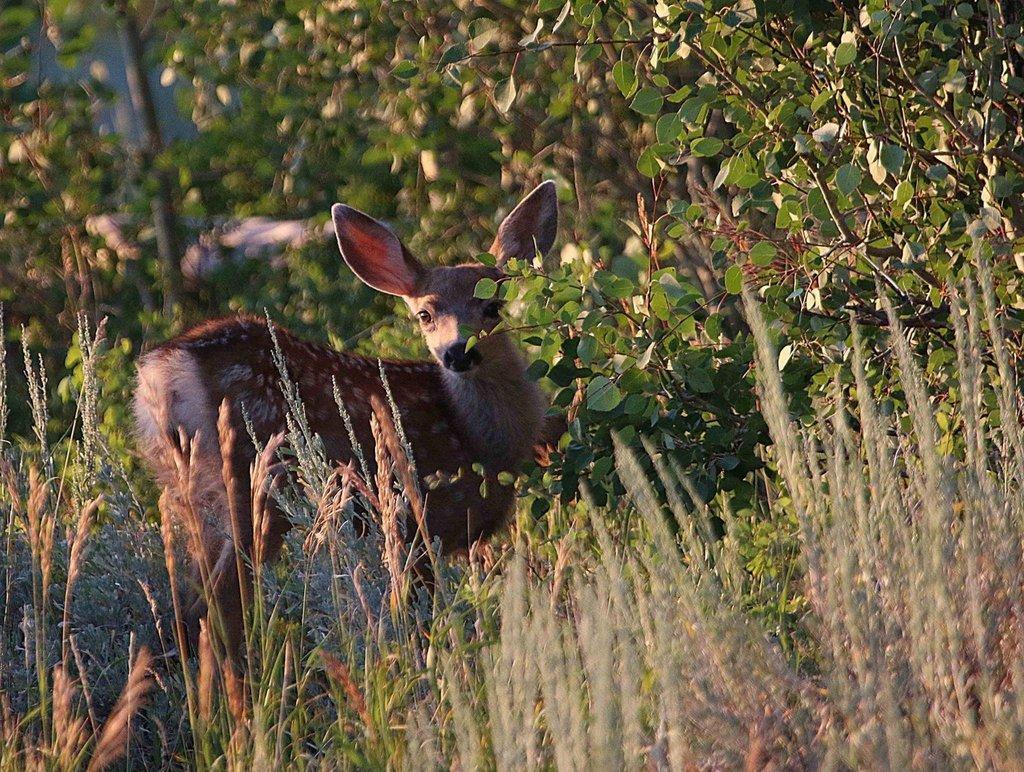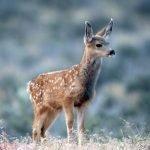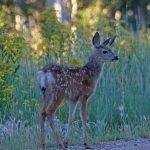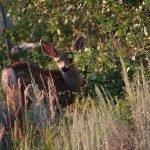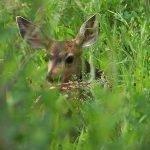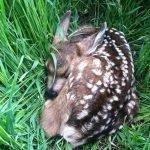DWR News Release
SALT LAKE CITY — If you hike or camp in an area where deer live in Utah, don’t be surprised if you come across a deer fawn, or maybe even an elk calf, during the early summer. This is the time of year when they are being born, which is why you may find one during your outdoor adventures.
If you do happen to see one in the wild, you probably won’t see its mother. Not seeing its mother might lead you to believe that the animal has been abandoned. But that’s rarely the case.
“Deer fawns are actually alone and isolated during their first weeks of life — and that’s on purpose,” Utah Division of Wildlife Resources big game coordinator Covy Jones said. “The mother knows that leaving the fawn alone is the best way to protect it from predators.”
Newborn big game animals fall into two categories: followers and hiders. Followers include bison calves and bighorn sheep lambs, which follow their mothers shortly after they’re born. Hiders, such as mule deer fawns and elk calves, do the opposite — they hide, alone, for most of the day.
During the day, a doe deer will reunite with its fawn for a short time, to nurse it and care for it. Then, to draw attention away from where the fawn is hiding, the mother will leave the fawn. The doe will spend the rest of the day feeding and resting.
Fawns are born with a creamy brown coat that’s covered with white spots. This camouflaged coat allows the fawn to blend in with its surroundings. And fawns don’t give off much scent, so it’s difficult for predators to smell them. Hiding is the best way for the fawn to stay safe.
After two or three weeks, the fawn grows strong enough to start accompanying its mother.
So, what should you do if you see a deer fawn or an elk calf that appears to be alone?
“Don’t approach it,” Jones said. “Watch it or take a photo of it from a distance, but don’t approach it. In almost every case, the fawn has not been abandoned by its mother.”
Finding and petting newly born animals is another problem because the animal’s survival depends on it being left alone. If you touch it, you may leave your scent on the animal, which could draw predators to it.
Even if you don’t touch the fawn, getting too close can cause the fawn to run away from you — and from its hiding place where its mother left it. Then, when the mother comes back to care for the fawn, it won’t be there.
“Keeping your distance and not touching animals are the keys to keeping young animals alive,” Jones said.
For more tips about how to safely live with wildlife, visit the Wild Aware Utah website.
- Photos courtesy of the Utah Division of Wildlife Resources


